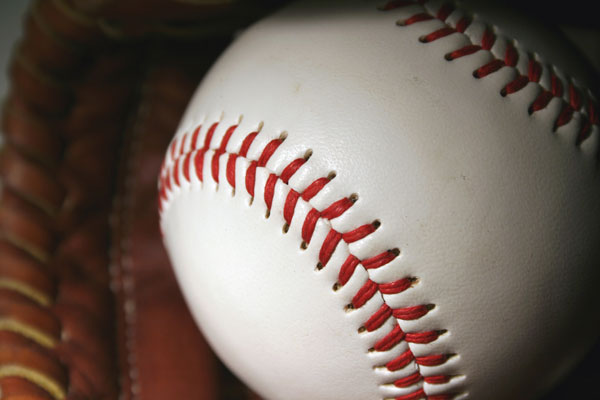A bill that proposed a one-year moratorium on metal and
composite bats in California high schools has been withdrawn after
the CIF, the state’s governing body for high school sports, agreed
to adopt new safety standards for the 2011 baseball season.
SANTA ROSA
A bill that proposed a one-year moratorium on metal and composite bats in California high schools has been withdrawn after the CIF, the state’s governing body for high school sports, agreed to adopt new safety standards for the 2011 baseball season.
Under the new standards, California will require that schools use so-called BBCOR bats, which are designed to perform more like wood bats and limit the speed of batted balls. In addition, the CIF will consider making protective headgear mandatory for softball and baseball pitchers, infielders and base coaches by 2012.
A spirited debate over the safety of metal bats has raged since Marin Catholic pitcher Gunnar Sandberg was seriously injured in March after being hit in the head by a line drive off an aluminum bat.
The BBCOR (ball-bat coefficient of restitution) standards will be adopted by the NCAA in 2011 and they were scheduled to be implemented at the high school level in 2012. In July, however, the National Federation of State High School Associations required that all composite bats, made of graphite-fiber materials, fulfil the BBCOR standard in 2011. After the CIF’s ruling, California is the only state to require the BBCOR standard for aluminum bats as well.
Baseball coaches who had faced the prospect of possibly playing with wood bats next season responded favorably to Wednesday’s announcement.
“Anything that’s going to improve the safety of the game, I’m obviously 100 percent for it,” said Dean Haskins, baseball coach of Santa Rosa’s Montgomery High. “I see it as a decent compromise instead of pushing for the all wood-bat solution.”
Petaluma’s Casa Grande head coach Paul Maytorena said, “If they think it will make things safer for the kids, I’m definitely for it. But like I’ve always said, there’s still going to be risks. This won’t take that away at all.”
Maytorena also expressed concern over the costs of the BBCOR bats. Mel Arnerich, the manager of T&B Sports in Santa Rosa, says the bats will likely cost between $300 and $400 each.
But Assemblyman Jared Huffman, D-San Rafael, believed the cost of sticking with the status quo was too great. In response to Sandberg’s injury, Huffman introduced AB 7, the High School Baseball Safety Act of 2010, in April. The bill called for a one-year moratorium on non-wood bats, but Huffman remained in contact with the California Interscholastic Federation throughout the process. The bill passed the Senate Education Committee in May, but Huffman held the bill on the Senate floor for several weeks as discussions with CIF officials continued.
On Friday, the CIF executive committee agreed to adopt the BBCOR standards one year ahead of schedule.
“It was always my preference to find a solution that did not involve legislation,” Huffman said. “I wanted this to be done cooperatively, not a mandate that was handed down.”
CIF Executive Director Marie Ishida said the committee was swayed primarily by safety issues, but financial considerations also played a role.
If Huffman’s bill passed, schools would have to purchase wood bats for 2011 and BBCOR bats for the following year.
“There was a fiscal side to it,” Ishida said. “It didn’t make sense to us financially to have one type of bat next year and turn around and require another type of bat the following year.”
In some ways, Huffman said, the CIF’s ruling exceeded some of the safety standards he sought in his bill. In Huffman’s bill, for example, protective headgear was proposed only for baseball pitchers. The CIF will propose to the NFHS that they develop standards for headgear for both baseball and softball players by 2012. They also are advocating headgear for base coaches and infielders.
Haskins and Maytorena believe requiring headgear for infielders is unnecessary. Players at those positions are usually more than 90 feet away from home plate and are not typically considered at risk of being hit by a batted ball.
“We would rather err on the side of safety rather than worrying about it after the fact,” Ishida said in response to such concerns.
The BBCOR bats have been designed to be less lively than metal bats. University of Illinois physics professor Alan Nathan, who has done extensive research on the physics of the bat-ball collision and bat performance, has said that metal bats outperform wood bats by about 5 percent. Nathan, who serves on the NCAA Baseball Research Panel, says that 5-percent gap “will essentially become zero” with BBCOR bats. On Wednesday, Nathan applauded the CIF’s decision.
The CIF’s new standards include a provision if BBCOR bats are commercially unavailable by Jan. 1. In such a case, aluminum bats that were used during the 2010 season could be used in 2011.
Arnerich guesses that he might have BBCOR bats in stock by Oct. 1. But Mike May, a spokesman for the Sporting Goods Manufacturers Association, said it’s possible that the supply won’t meet the demand.
“The priority will be for American colleges from Maine to L.A. because they have to have the bats,” May said. “You can’t just make these bats at the snap of a finger. They have to be designed, tested and approved.”
Story by Eric Branch, The Press Democrat










